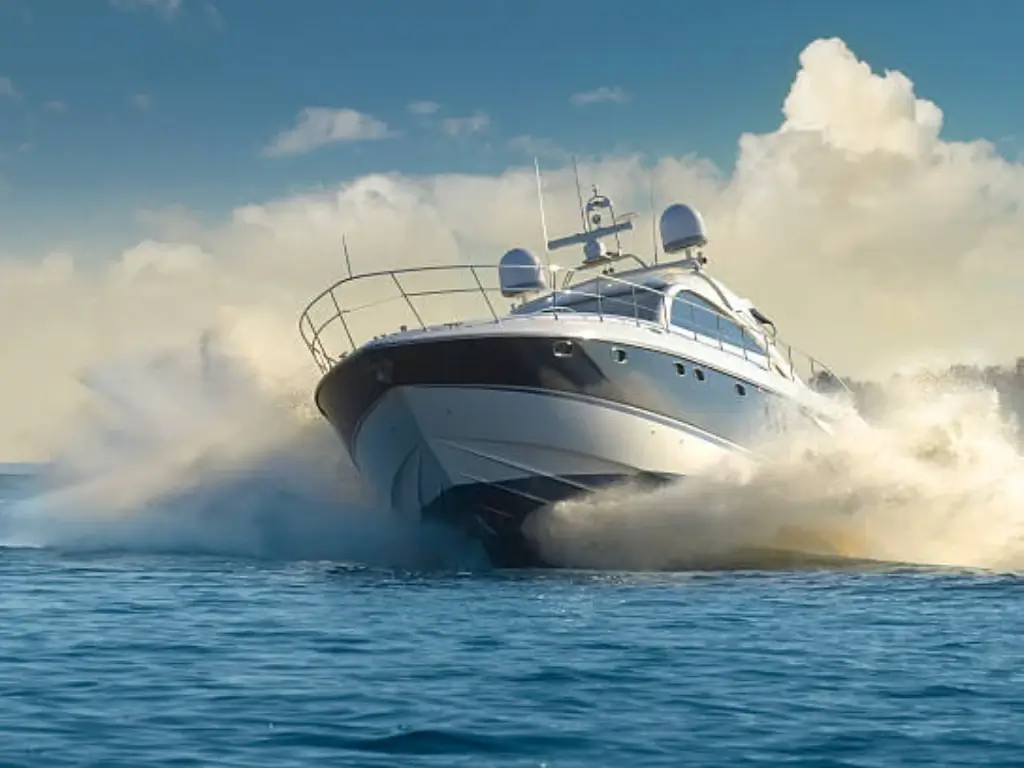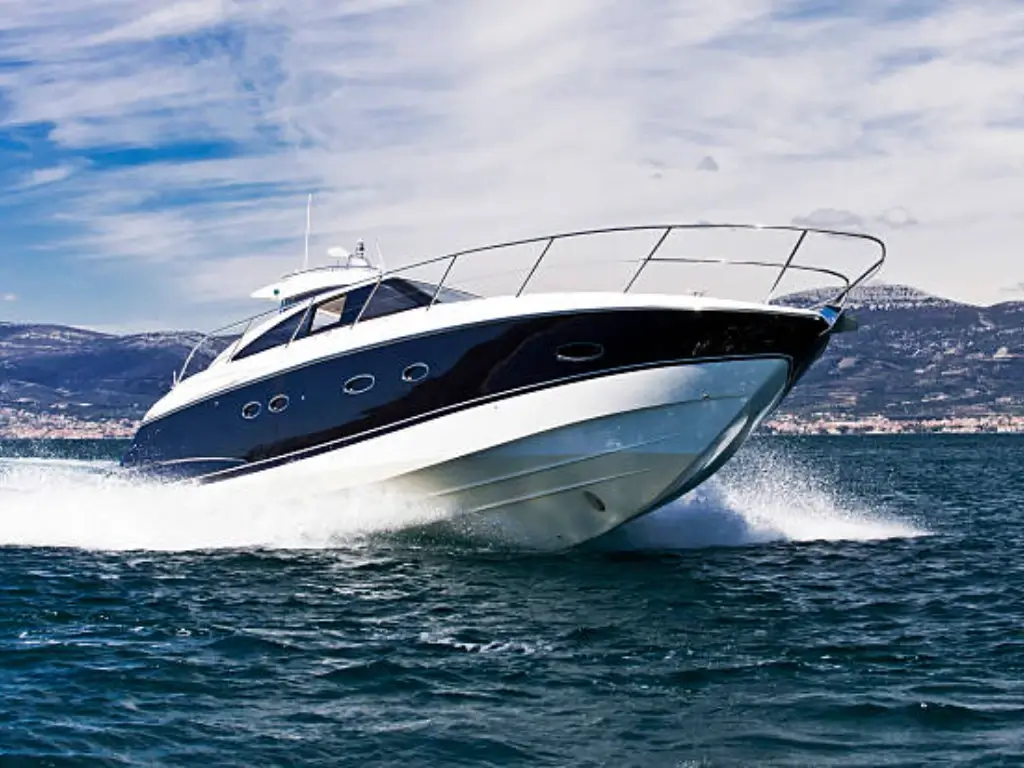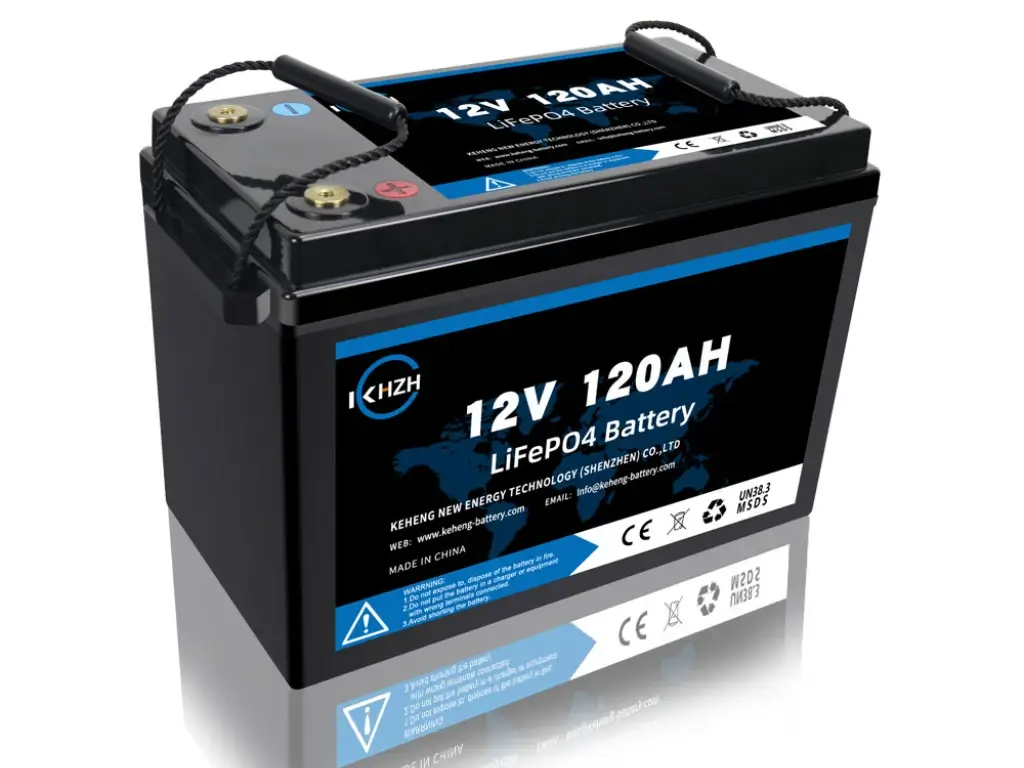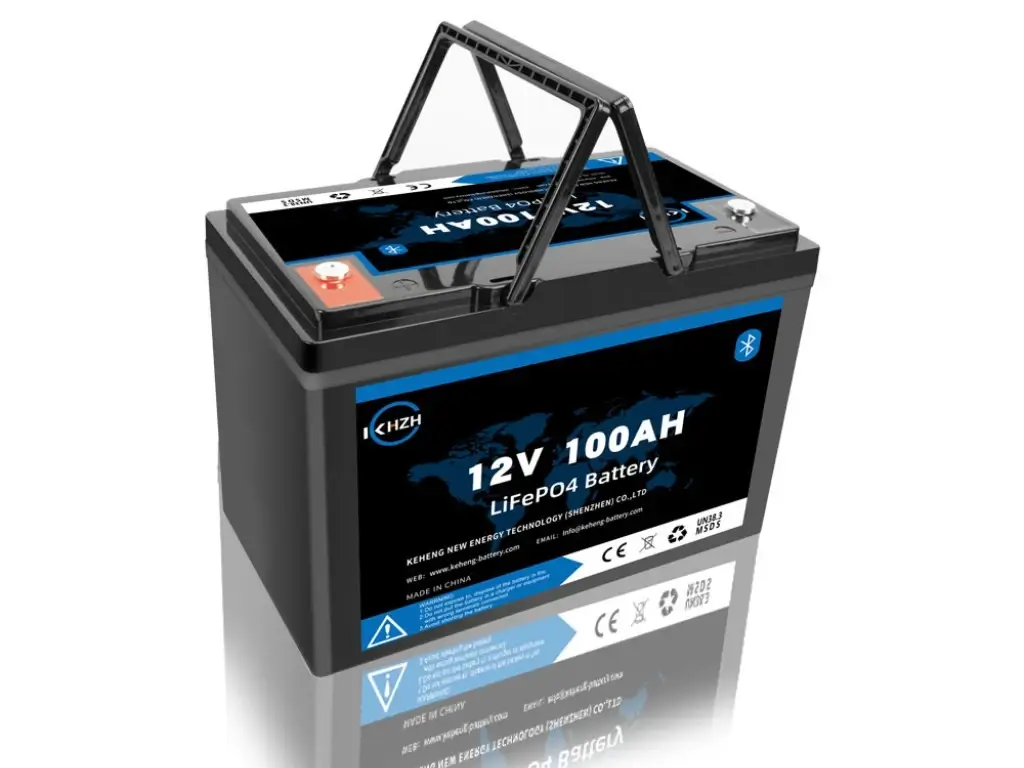When we engage in discourse regarding the energization of our nautical pursuits, the selection of an appropriate battery is a pivotal consideration. In the realm of maritime activities, lithium marine batteries have ascended to preeminence in recent years. The rationale for this trend is multifaceted: these energy storage solutions transcend mere power provision, embodying the nucleus of your vessel’s electrical subsystem, and are synonymous with dependability, durability, and operational efficiency. By integrating a premier lithium marine battery into your setup, you have the potential to enhance your aquatic experiences substantially.
Lithium-ion cells, particularly tailored for trolling motors and an array of other seafaring applications, have garnered acclaim for their exemplary performance metrics when juxtaposed with archetypal lead-acid batteries. These advanced accumulators are characterized by their reduced mass, expedited charging capabilities, and augmented energy output, rendering them the quintessential choice for maritime enthusiasts who demand unparalleled performance. Despite the plethora of alternatives available within the marketplace, procuring the optimal lithium marine battery to fulfill your specific requirements necessitates meticulous consideration—an endeavor into which we shall delve further.

Why Choose Lithium Over Traditional Lead-Acid
Lithium-based energy storage systems have dramatically altered the paradigms of maritime energy requirements. Their ascendency over the antiquated lead-acid counterparts is evident in multiple dimensions, solidifying their status as the preferred solution for mariners who prioritize efficiency, durability, and consistent performance. The ensuing exposition delineates their principal merits:
Advantages of Lithium Batteries
Lithium-based energy storage systems have dramatically altered the paradigms of maritime energy requirements. Their ascendency over the antiquated lead-acid counterparts is evident in multiple dimensions, solidifying their status as the preferred solution for mariners who prioritize efficiency, durability, and consistent performance. The ensuing exposition delineates their principal merits:
Augmented Energy Density: Lithium energy cells deliver a formidable energy density in the realm of 150-200 Wh/kg, a stark amplification compared to the meager 30-50 Wh/kg provided by the traditional lead-acid variety. This robust energy density translates to amplified power within a reduced form factor, thereby optimizing both the functional capacity and spatial economy of your watercraft.
Absolute Depth of Discharge (DoD): Unlike lead acid units, which suffer from diminished longevity if discharged beyond 50-80% of their capacity, lithium batteries can endure complete discharge without sustaining harm. This ability to fully exploit the energy reserve of each charging cycle ensures maximal energy utilization.
Zero Maintenance: Liberated from the obligatory water augmentations and specific gravity assessments endemic to lead-acid systems, lithium batteries afford a freedom from maintenance. This not only saves valuable time but concurrently escalates safety by mitigating acid spillage risks.
Prolonged Cycle Life: Exhibiting a life cycle that ranges from 2000 to 5000 cycles at 80% DoD, lithium batteries vastly eclipse the 300-800 cycle lifespan of their lead-acid analogs. This protracted longevity entails not only infrequent replacements over time but also provides a steadfast and dependable energy resource over the duration of their use.
Minimal Self-Discharge Rate: Lithium batteries exhibit an exceptionally low self-discharge rate of merely 1-2% per month, preserving their charge significantly longer than lead-acid batteries, which can deplete 4-6% per week. This quality is especially beneficial for seasonal boaters, guaranteeing an operational battery when required.
Reduced Mass and Compact Design: Lithium batteries are approximately 30-50% lighter than their lead acid equivalents for a given capacity. For instance, a 100Ah lithium battery may tip the scales at roughly 26 pounds, in contrast with a lead-acid battery of equal capacity that could weigh in the vicinity of 60 pounds. This drastic diminution in weight contributes not only to superior fuel economy but also to expedited manipulation.

Types of Marine Batteries
The maritime battery ecosystem encompasses a multitude of cell types, each meticulously engineered to fulfill distinct roles aboard a vessel. The primary classifications are as follows:
Engine Starting Batteries (Cranking Batteries): These specialized accumulators are constructed to dispatch an instantaneous surge of substantial electrical current over a brief span, an essential function for the ignition of engines. They incorporate a multitude of slender plates, which collectively afford an expansive surface area conducive to the delivery of the requisite high amperage necessary to activate the engine’s starter motor. Post ignition, the engine’s alternator customarily assumes responsibility for replenishing the battery’s charge.
Deep Cycle Batteries: Contrasting with their starting counterparts, deep cycle batteries are architected to dispense a uniform quantum of power over an extended duration. Their composition includes plates of increased thickness relative to those in starting batteries, endowing them with the resilience to endure numerous cycles of deep discharge followed by recharging. This attribute renders deep cycle batteries quintessential for the energizing of electronic apparatuses, electric trolling motors, as well as other power-dependent amenities on board.
Dual Purpose Batteries: Representing an amalgamation of the starting and deep cycle battery technologies, dual-purpose batteries are capable of performing both the engine ignition and moderate deep cycle tasks. Although their efficacy in each individual application may not rival that of the dedicated units, they offer a viable, space-efficient compromise for smaller crafts where the allocation of space for multiple batteries is constrained.
Key Features of High-Quality Lithium Marine Batteries
Energy Density and Efficiency
The preeminent lithium marine batteries transcend mere energy storage; they epitomize the pinnacle of storing power with consummate efficacy. Exhibiting energy densities that oscillate between 100-265 Wh/kg—dwarfing the modest 30-50 Wh/kg typical of lead acid batteries and significantly outstripping the intermediate values offered by Absorbed Glass Mat (AGM) batteries—these advanced lithium cells encapsulate a greater energy reserve within a notably more compact and lightweight package. This formidable energy density is pivotal for maritime applications; it signifies the capacity of vessels to be equipped with enduring energy sources sans the encumbrance of exorbitant mass. In comparison, while AGM batteries represent a step up from traditional flooded lead-acid batteries in terms of maintenance and spill proofing, they do not quite match up to the superior power-to-weight ratio afforded by lithium counterparts. Such an attribute markedly influences the vessel’s overall performance metrics, including agility, maneuverability, as well as fuel economy. In the realm of boating, where the addition of each superfluous pound could fundamentally alter the dynamics of operation and efficiency, the comparably diminutive heft proffered by lithium batteries is tantamount to a substantial competitive advantage.
Lithium marine batteries also distinguish themselves through their exceptional efficiency. They are characterized by an insignificant rate of self-discharge, safeguarding the availability of the stored energy for usage upon demand, even after protracted intervals of dormancy. Moreover, they uphold a high level of operational efficiency throughout their discharge cycle, consistently delivering power. This unwavering output ensures that navigation systems, trolling motors, and other critical marine apparatus operate at peak performance levels, devoid of the energy fluctuations that commonly afflict less efficient power cells. Additionally, with a self-discharge rate approximating merely 1-2% per month, they are impeccably suited to the marine context where daily battery utilization may not be a necessity. Consequentially, after extended storage or a season of inactivity, these batteries maintain the majority of their charge, offering immediate functionality and dependability upon reactivation.
Exceptional Durability in Marine Environments
While navigating aquatic expanses, one necessitates a battery system that is structurally equipped to withstand the rigors of the marine milieu. The premier lithium marine batteries are meticulously engineered to thrive amidst challenging sea-borne conditions. High-end lithium batteries, innovated with an emphasis on robustness, are prepared to stand firm against the distinct tribulations of maritime environments. They customarily feature protective casings fashioned from materials known not solely for their water-resistant and vibration-resistant qualities but also their ability to resist the corrosive onslaught of saline water. This defence mechanism is indispensable, given that moisture and salinity could severely undermine the structural integrity and functioning of a battery.
Furthermore, these batteries are eminently crafted to withstand the significant temperature (whether it is in extremely high temperatures or cold temperatures) oscillations typical of sea conditions, from the sweltering intensity of solar radiation to the cool nautical breezes. This thermal resilience facilitates unwavering performance and forestalls losses in efficiency under extreme conditions. The resultant yield is an unwavering source of power, impervious to the stringent adversary that is the marine environment, effectively assuring safety, unfaltering operation, and an extended lifespan. In the context of marine endeavors, where the reliability of equipment could spell the difference between a benign journey and perilous stranding, the enduring structural integrity of lithium maritime batteries evolves from a mere facet of convenience to an absolute requirement.
Understanding Battery Capacities and What You Need
Deciphering Ampere Hour Ratings
One key aspect of choosing the best lithium marine battery is understanding the battery’s capacity, usually measured in ampere-hours (Ah). This rating tells you how much electricity the battery can store and deliver over time. For example, a 120Ah battery can theoretically provide 1 amp for 120 hours, or 6 amps for 20 hours. Higher Ah ratings mean more stored energy, which translates to longer run times for your appliances and gadgets.

Estimating Your Power Needs
To pick the right capacity, you need to estimate your power needs. Typically, for small boats like kayaks, a lithium battery of around 50Ah generally suffices. Consider the appliances and accessories you use on your boat – from GPS to fish finders, trolling motors, and lights. For medium-sized boats, which may have more or larger electronic devices, battery capacities are often 100 Ah. Large boats, equipped with multiple and high-consuming electronic devices, usually need batteries with higher capacities, typically 150 Ah or more. Each device consumes power differently, so tallying up their consumption will give you a clearer idea of the battery capacity you’ll need.
Here’s a reference table that outlines the approximate power consumption of various marine devices:
| Marine Device | Average Power Consumption (Watts) |
| GPS | 5-15W |
| Fish Finder | 5-50W (varies by model) |
| Trolling Motor | 100-600W (depends on size) |
| Navigation Lights | 2-10W per bulb |
| VHF Radio | 0.5-6W (standby), 25-60W (transmit) |
| Cabin Lights | 1-4W per LED bulb |
| Bilge Pump | 20-50W |
| Refrigerator/Cooler | 40-100W (varies by size) |
| Audio System | 20-200W (depends on system) |
It’s important to check the specific power requirements of your own devices, as these can vary. Remember, it’s better to have 20-30% more capacity than you think you’ll need, to accommodate for unexpected power demands or additions to your boat’s gadgets in the future.
Understanding Battery Voltage and Cold Cranking Amps (CCA)
The voltage bestowed by a battery is a fundamental feature dictating its power delivery, and disparate vessels may embody electrical ecosystems engineered around specific voltage parameters. For instance, a plethora of petite recreational and commercial watercrafts are built around a standard 12-volt system, while larger commercial vessels may demand a more formidable 24-volt circuit. Deploying a battery with an incompatible voltage level could potentially culminate in operational impediments, diminished energy efficiency, and detrimental effects on the boat’s electrical infrastructure. Therefore, ascertaining the correct voltage for a marine starting battery confounds a critical choice, indispensable to the vessel’s compliance with the electrical system parameters and guaranteeing successful engine ignition.
Regarding maritime cranking batteries specifically, the Cold Cranking Amps (CCA) remains a fundamental performance determinant. The CCA metric quantifies a battery’s capacity to prompt an engine ignition in chilly conditions, typically gauged at a freezing 0°F or -18°C. The CCA value signifies the apex current a battery can discharge over 30 seconds under these extreme cold conditions without its voltage descending below a functional level. This quantifier proves particularly vital for starting batteries – given their objective is to unload a substantial current in a fleeting period sufficient to ignite the engine.
Typically, the choice of a cranking battery is contingent on the specifications and dimensions of your watercraft’s propulsion unit. While universal guidelines are elusive, the underlying tabulation furnishes rudimentary parameters to assist in the selection of an appropriate battery capacity and voltage, tailored to align with various vessel types and engine configurations:
| Boat Type / Engine Size | Recommended Battery Voltage | Recommended Battery Capacity (CCA – Cold Cranking Amps) |
| Small boats (e.g., small fishing boats, sailboats) | 12 volts | 350 – 550 CCA |
| Medium boats (e.g., mid-sized yachts, sport fishing boats) | 12 volts | 550 – 750 CCA |
| Large boats (e.g., large yachts, commercial vessels) | 12 volts / 24 volts | 750 – 1000+ CCA |
| Very large or multiple-engine boats | 24 volts | 1000+ CCA |
Battery Size and Weight Considerations
Finding the Right Fit for Your Boat
Battery size is a crucial factor in marine applications. The best lithium boat battery should fit snugly in your designated battery space. Always check the dimensions of the battery against your available space to ensure a proper fit. Remember, a misfit can lead to installation issues or even safety hazards. While there isn’t a universal standard size for battery compartments in boats, here’s a general guide to help you understand what size of battery you might need based on the size of your boat:
| Boat Size | Typical Battery Compartment Dimensions | Suggested Battery Size |
| Small Boats (e.g., Kayaks, Small Fishing Boats) | 12″ x 7″ x 9″ (LxWxH) | Group U1, 35-50 Ah |
| Medium Boats (e.g., Bass Boats, Sailboats) | 20″ x 8″ x 10″ (LxWxH) | Group 24/27, 50-100 Ah |
| Large Boats (e.g., Cabin Cruisers, Yachts) | 20″ x 11″ x 10″ (LxWxH) or larger | Group 31, 100-150 Ah or multiple batteries |
Note: These dimensions are approximate. Always measure your specific battery compartment before purchasing.
You may also like: What is the Best Deep Cycle Battery for Trolling Motor Use
Benefits of a Lightweight Design
The weight of your battery affects your boat’s performance and fuel efficiency. Lithium batteries are significantly lighter than lead-acid batteries, often weighing about half as much. This less weight advantage can improve your boat’s speed and reduce fuel consumption, making your boating experience not just more efficient but also more enjoyable.
The Importance of Battery Management Systems
A Battery Management System (BMS) constitutes an indispensable component within the highest echelon of lithium marine batteries, playing a pivotal role in ensuring battery safety and optimizing operational efficiency by regulating charge and discharge processes. A BMS acts as a sentry, safeguarding the battery cells from perils such as overcharging, excessive discharge, and thermal overload, which can significantly augment the longevity of your power supply. Moreover, advanced BMS configurations, such as those proffered by Keheng, are imbued with salient features such as Bluetooth connectivity, enabling you to conveniently oversee the status of your battery via mobile phone apps or other compatible devices. This extent of surveillance and control transcends mere convenience, representing a transformative leap forward in managing your vessel’s power matrix with utmost safety and efficiency.

How to Install Lithium Marine Batteries
The meticulous installation of lithium marine batteries is a fundamental determinant for achieving peak performance and safeguarding operational safety. Initially, it is imperative to verify the battery’s congruence with your vessel’s electrical configuration. Keheng offers a suite of lithium batteries embracing an array of voltage outputs, including but not limited to 12V, 24V, 36V, and 48V models, which afford the versatility to be integrated in series or parallel arrangements to tailor to your distinct power requisites.
When commencing installation, it is essential to firmly anchor the battery to mitigate any potential for displacement that could manifest harm, a scenario that can be exacerbated by tumultuous marine conditions. Furthermore, it is vital to ensure adequate ventilation to circumvent hazardous heat accumulation and to ascertain that each connection is both secure and free from corrosive elements. Bear in mind that a battery instituted with precision and care not only operates with heightened efficacy but also enjoys an extended service life.
Charging Your Lithium Marine Battery
The meticulous adherence to proper charging protocols is paramount for prolonging the longevity and enhancing the performance of your lithium marine battery. It is imperative to employ a charging apparatus specifically calibrated for lithium-ion cells, which will facilitate appropriate charging cycles. Although lithium batteries boast the capacity for more expeditious energy recuperation than their lead-acid counterparts, caution must be exercised not to expedite the charging unduly with incompatible charging devices. One should vigilantly monitor the battery’s state of charge, eschewing scenarios where its energy levels are allowed to diminish excessively prior to reconstitution. Such a regimen is instrumental in sustaining the cell’s health and functional vitality over protracted use.
Maximizing Battery Life and Performance
To extract the maximal potential from your lithium marine battery, commitment to regular maintenance is indispensable, despite their substantially lower requirements for upkeep in comparison to lead-acid batteries. It is advisable to keep the terminal contacts immaculately clean and conduct periodic inspections for any indications of deterioration or damage. It is also prudent to shield the battery from the extremities of temperature fluctuations, as exposure to severe heat or cold can deleteriously influence its efficacious output and service lifespan. Moreover, during prolonged intervals of dormancy, it is recommended to store the battery in an environment that is both temperate and desiccated, whilst maintaining it at an ideal charge threshold.
Related Post: The Ultimate FAQ: How Long Do Marine Batteries Last
Future of Lithium Marine Battery Technology
The future of lithium marine batteries looks promising with continuous advancements in lithium battery technology. We can expect to see even higher energy densities, longer lifespans, and more environmentally friendly options. Innovations like integrated solar panels for continuous charging and smart systems for more efficient power management are on the horizon. These developments will further revolutionize how we power our marine adventures.
FAQs: Everything You Need to Know
- Is the Investment in Lithium Batteries Warranted?
Although the initial procurement cost of lithium batteries may register an increase of approximately 30-50% over their lead-acid counterparts, they proffer an operational lifespan that may extend up to two to threefold longer. For instance, a standard lithium marine battery could sustain 2000-5000 charge cycles, set against the 300-800 cycles typically associated with a conventional lead-acid battery. Over the course of time, the prolonged durability of lithium batteries potentially manifests as an economic benefit, given the markedly diminished frequency of battery replacement.
- Are Lithium Batteries Considered Safe?
The majority of lithium marine batteries are equipped with sophisticated Battery Management Systems (BMS) that mitigate common safety hazards. For example, a BMS is capable of deactivating the battery when temperatures soar beyond the threshold of 50°C (122°F) or plummet below -20°C (-4°F), thus significantly curtailing the dangers posed by temperature extremes.
- How Do Lithium Batteries Fare under Severe Thermal Conditions?
Lithium batteries are renowned for their operational efficiency across a vast thermal spectrum, ranging from -20°C to 60°C (-4°F to 140°F). Notwithstanding, charging procedures are typically constrained at temperatures below the freezing point of 0°C (32°F) to preserve the battery’s structural fidelity.
- Do Lithium Batteries Necessitate the Use of Specialized Chargers?
Affirmative, lithium batteries demand chargers capable of delivering an elevated charging voltage, generally estimated at around 14.4 to 14.6 volts for lithium iron phosphate (LiFePO4) cells, as opposed to the approximate 13.8 volts requisite for lead-acid variants. This ensures that charging is both efficacious and within safety parameters.
- Can Lithium Batteries Optimize the Performance of My Vessel?
The advantageous weight differential of lithium batteries is conspicuous, with them weighing nearly half as much as lead-acid batteries. To illustrate, a 100Ah lithium battery may tip the scales at close to 13 kg (29 lbs), in contrast to a lead-acid battery of an identical capacity, which could weigh approximately 28 kg (62 lbs). This significant alleviation in weight can be conducive to bettering velocity and improving fuel economy.
- What Are the Provisions Concerning Warranty and Customer Support for Lithium Batteries?
Warranties furnished with lithium marine batteries customarily span from 5 to 10 years, surpassing the 1-3 year warranty period commonly available for lead-acid batteries. This extended warranty timeframe is indicative of their anticipated extended operational lifetime and steadfast reliability.
Conclusion: Making the Right Choice
The decision to procure the best lithium marine battery culminates in a deliberate equilibrium between your vessel’s energy demands and the integration of pertinent features. Reflect upon the dimensions of your craft, the requisite power needs, and the particular circumstances it will encounter. Bear in mind that the allocation of capital towards a superior-quality lithium battery constitutes an investment into the extended durability, heightened operational efficiency, and the overall enhancement of your nautical experiences. Armed with the insights and recommendations delineated within this compendium, you are now well-prepared to execute a discerning choice, thereby reaping the rewards of stalwart and efficient energy supply on your ensuing maritime escapades.
Empower your maritime ventures with KEHENG’s lithium batteries
At Keheng, we offer a comprehensive suite of lithium-ion batteries, meticulously engineered for a broad spectrum of nominal voltages, embracing 12V, 24V, 36V, 48V, 60V, 72V, 96V, and up to 144V configurations. Whether your intentions encompass procuring robust starter batteries for marine use or investing in deep-cycle batteries of exceptional endurance, Keheng is equipped to cater to your diverse electrical storage requirements with precision. Keheng’s lithium batteries are lauded for their superior quality and are accompanied by a warranty that generously extends to 200% of the duration customarily offered by the majority of lithionic cell manufacturers within China’s ambit. We provide series capable LiFePO4 batteries, low temperature self-heating LiFePO4 batteries, Bluetooth LiFePO4 batteries, and high rate LiFePO4 lithium batteries. For those requiring bespoke battery solutions, we invite you to initiate a dialogue with Keheng to receive a complimentary quotation tailored to your specifications.




